Abstract
1. The responses of single afferent fibres of carotid body chemoreceptors to independent changes in arterial O2 and CO2 tensions and pH were studied in the cat in vivo.
2. The response curve obtained relating chemoreceptor activity to changes in arterial PO2 was similar to an hyperbola; the frequency of nerve impulses at first decreased rapidly as the Pa,O2 was raised and then more slowly. The arterial PO2 at which the slow decrease was reached varied among the different fibres; the mean level was 190 mm Hg (S.D. ± 40 mm Hg).
3. Single chemoreceptor afferent fibres continued to discharge even when the arterial PO2 was more than 600 mm Hg.
4. The discharges of single chemoreceptor afferent fibres increased both with increasing Pa,CO2 at constant pH and Pa,O2, and with increasing arterial H+ at constant Pa,CO2 and Pa,O2.
5. It is concluded that single carotid body chemoreceptor afferent fibres of the cat can be activated in vivo by an increase in either arterial H+ or arterial PCO2 as well as by a decrease in arterial PO2.
Full text
PDF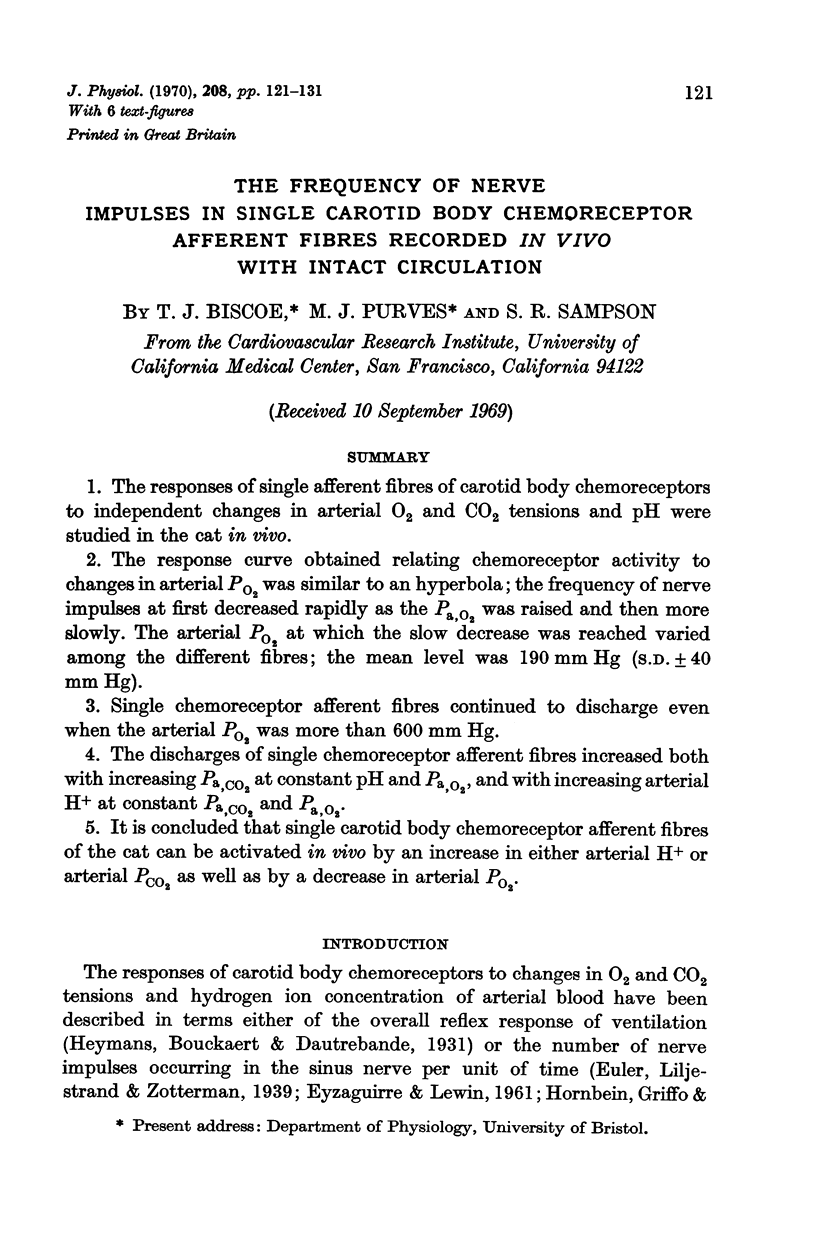
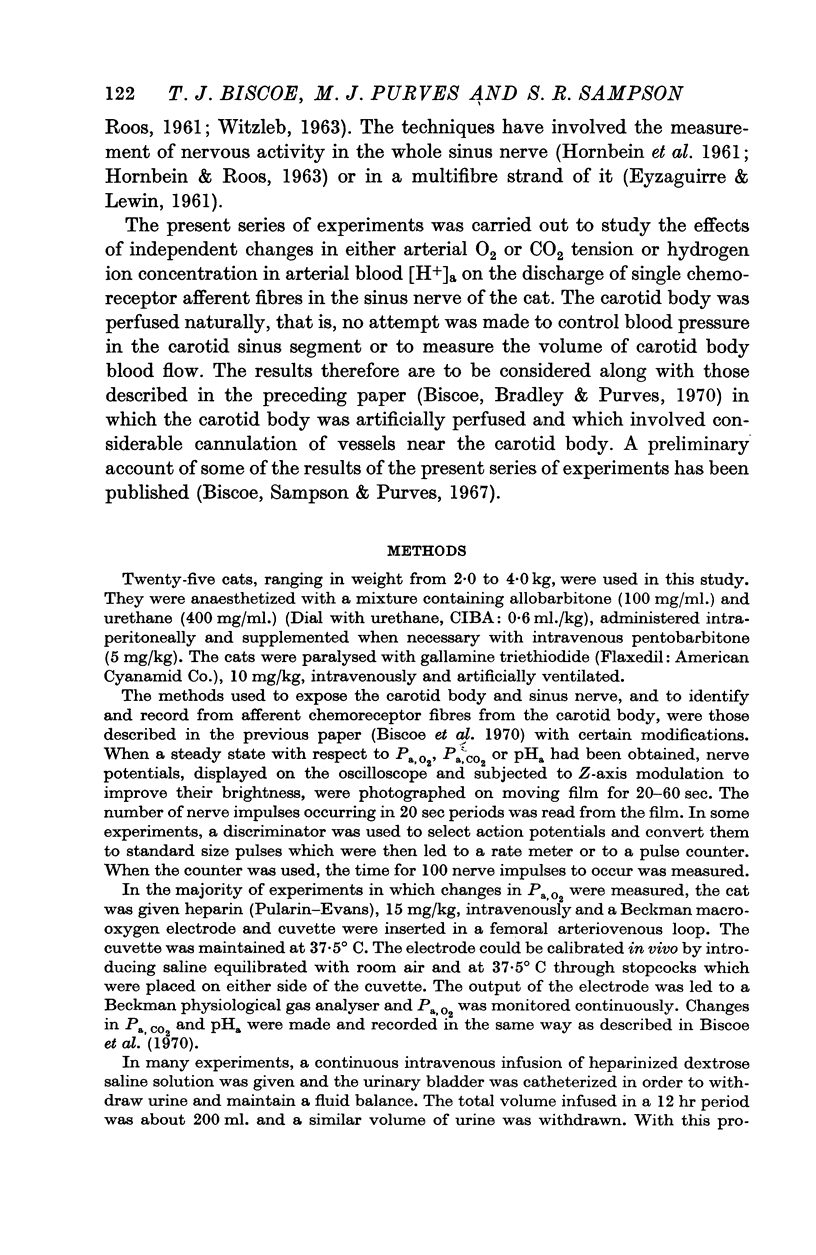
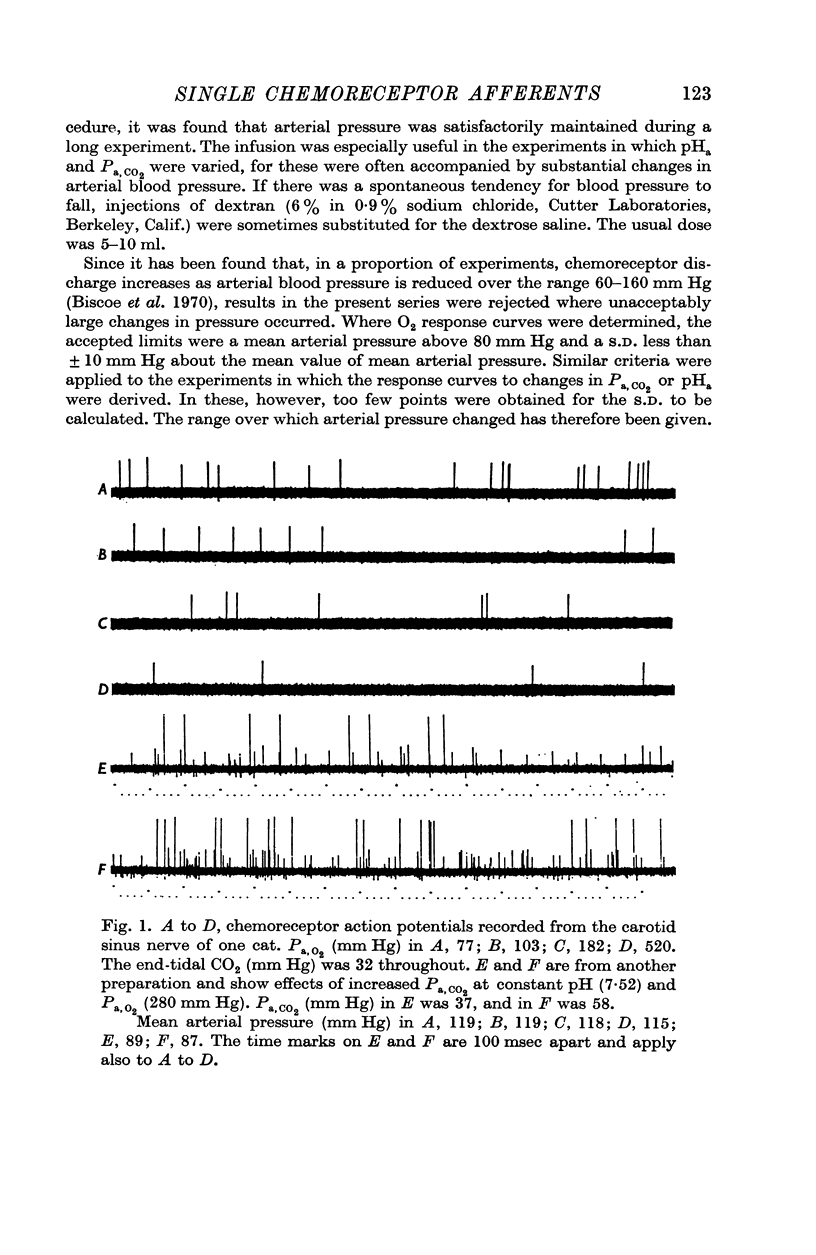
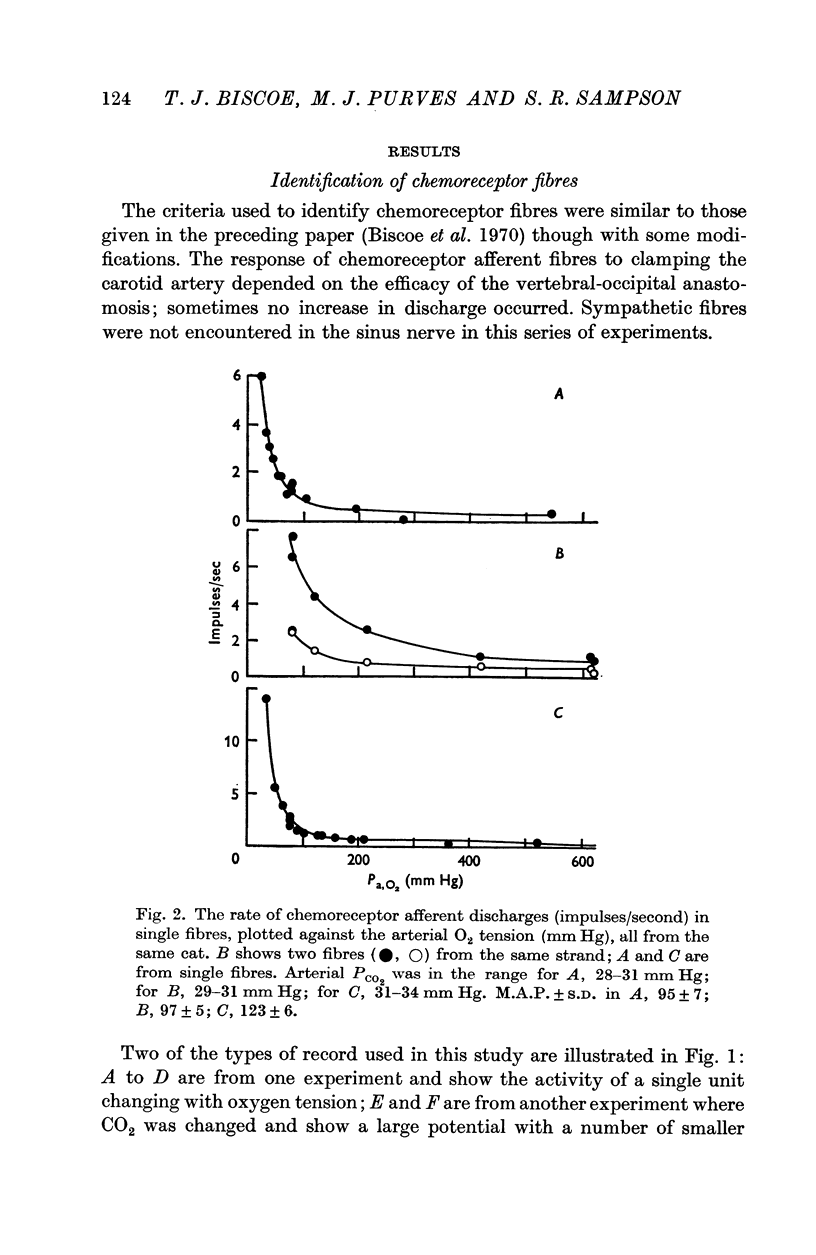
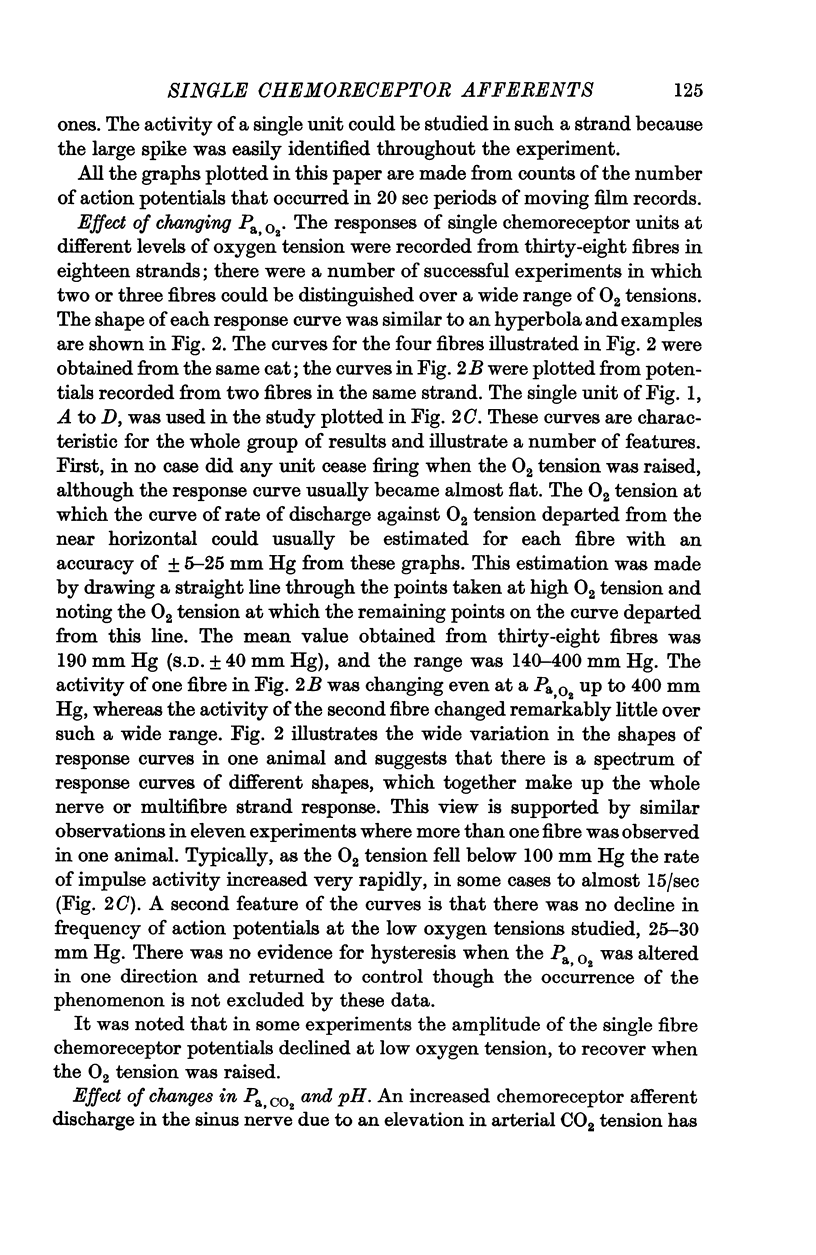
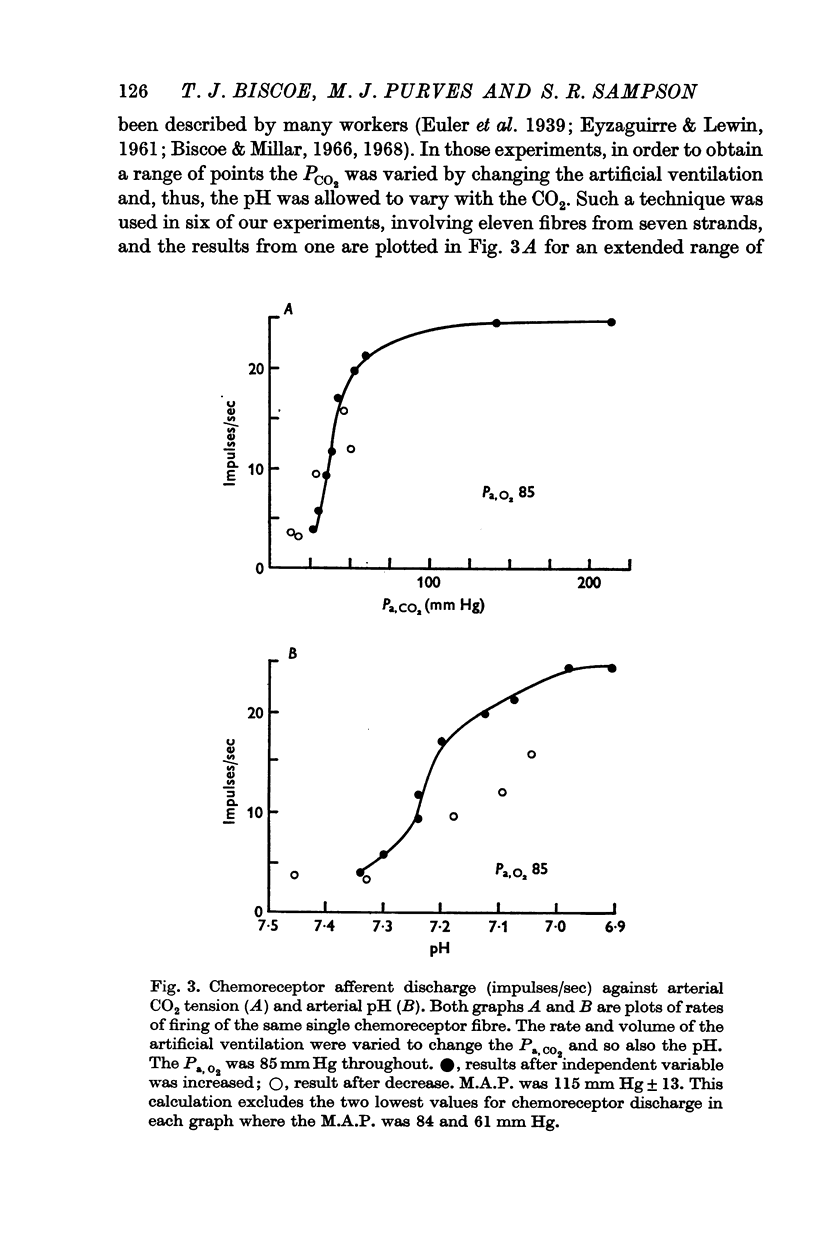
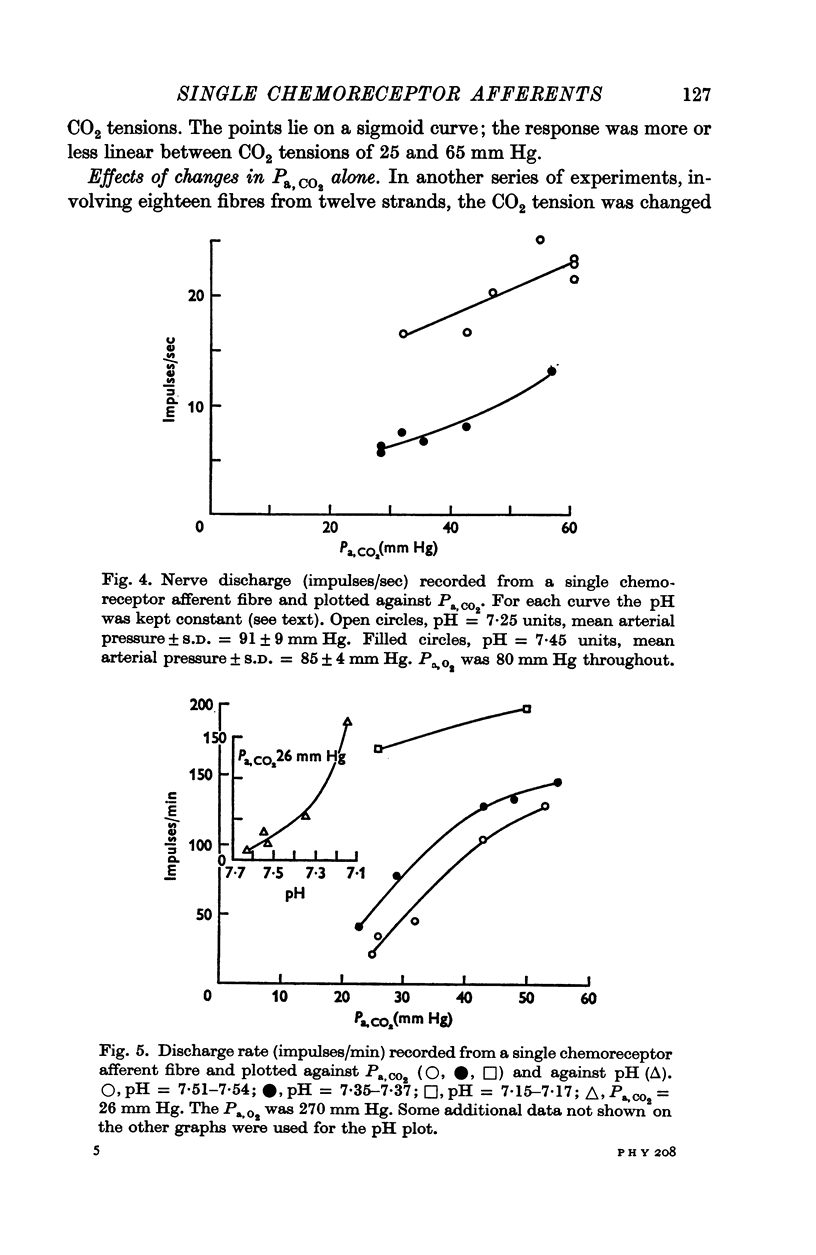
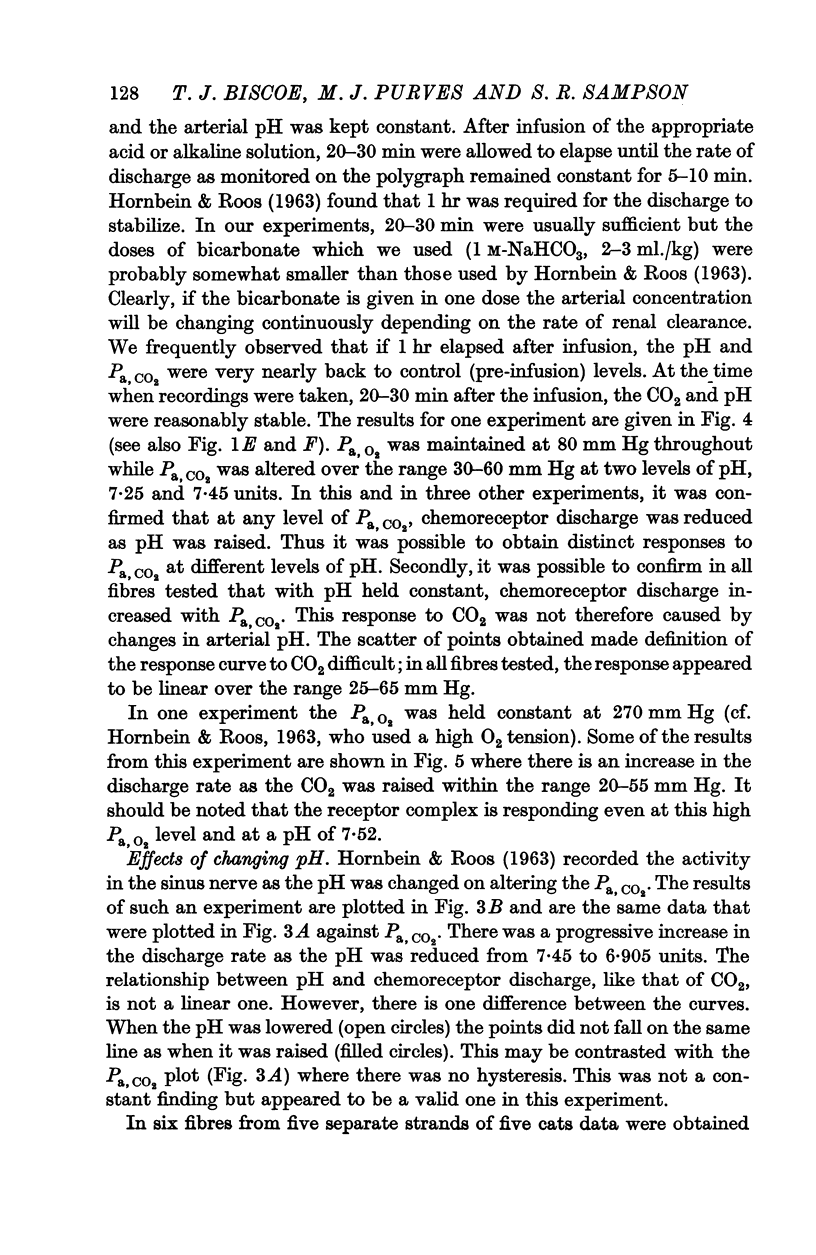
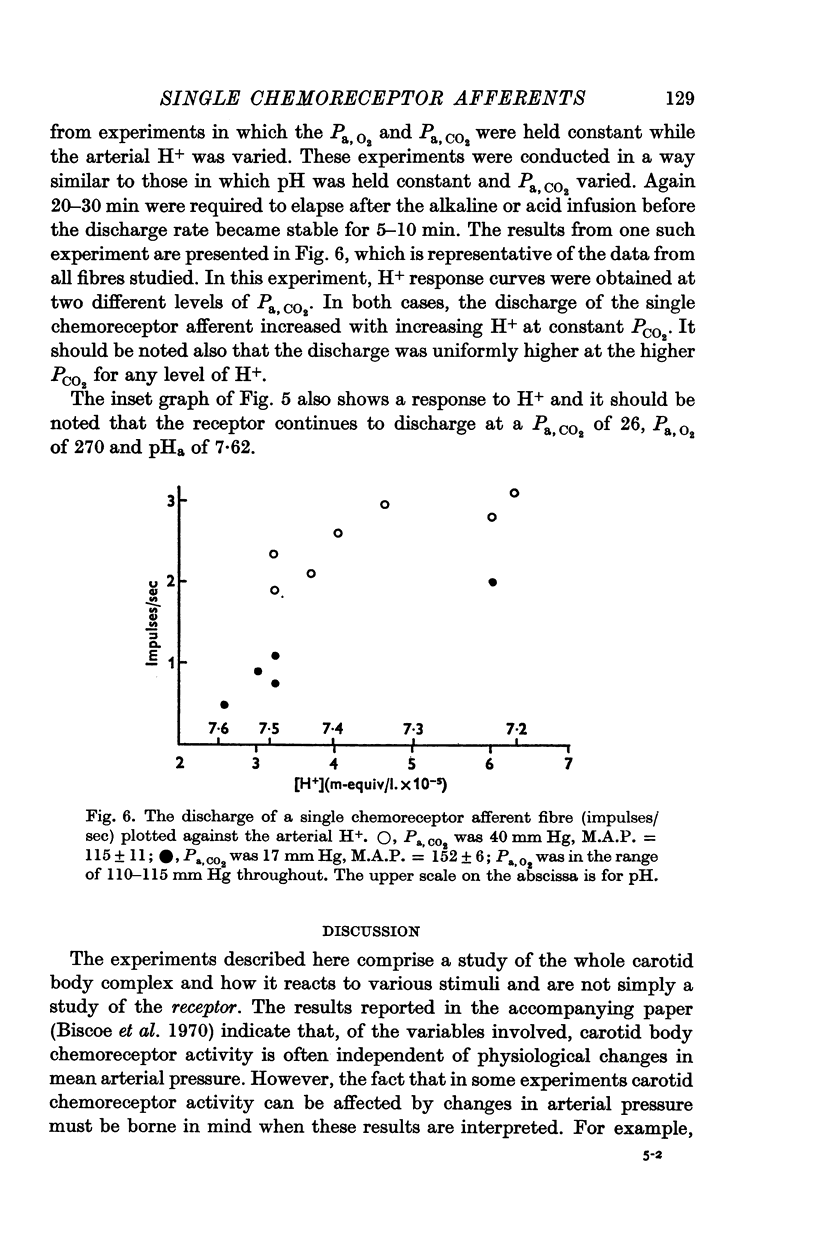
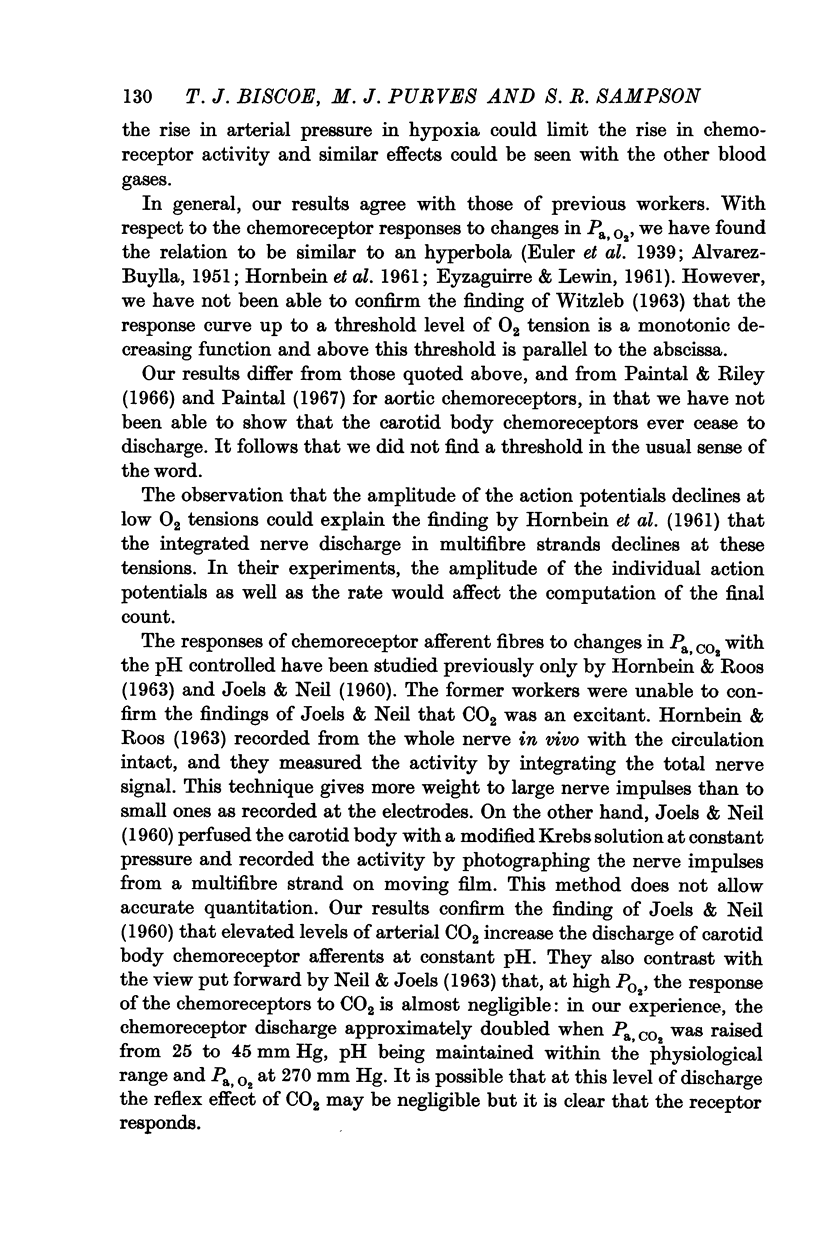
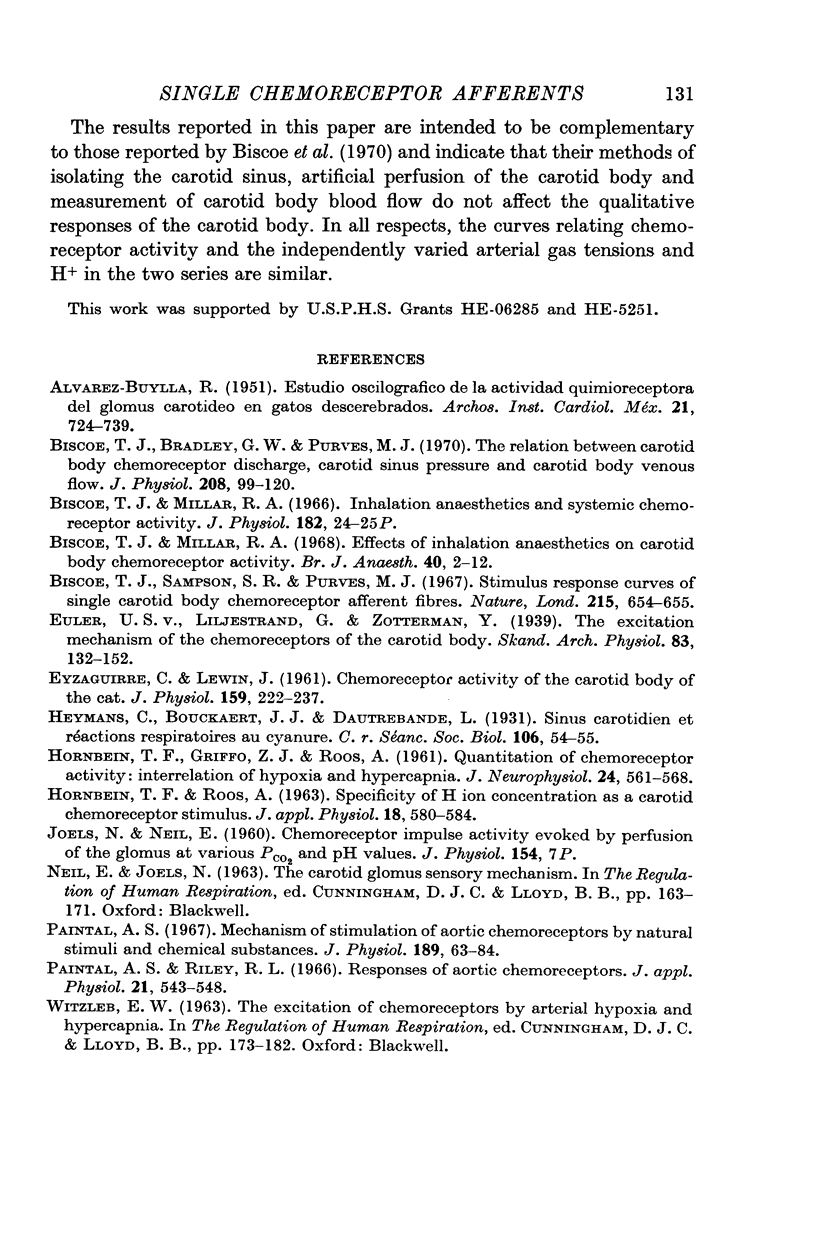
Selected References
These references are in PubMed. This may not be the complete list of references from this article.
- ALVAREZ-BUYLLA R. Estudio oscilográfico de la actividad quimiorreceptora del glomus carotideo en gatos descerebrados. Arch Inst Cardiol Mex. 1951 Dec;21(5-6):724–739. [PubMed] [Google Scholar]
- Biscoe T. J., Bradley G. W., Purves M. J. The relation between carotid body chemoreceptor discharge, carotid sinus pressure and carotid body venous flow. J Physiol. 1970 May;208(1):99–120. doi: 10.1113/jphysiol.1970.sp009108. [DOI] [PMC free article] [PubMed] [Google Scholar]
- Biscoe T. J., Millar R. A. Effects of inhalation anaesthetics on carotid body chemoreceptor activity. Br J Anaesth. 1968 Jan;40(1):2–12. doi: 10.1093/bja/40.1.2. [DOI] [PubMed] [Google Scholar]
- Biscoe T. J., Sampson S. R. Stimulus response curves of single carotid body chemoreceptor afferent fibres. Nature. 1967 Aug 5;215(5101):654–655. doi: 10.1038/215654a0. [DOI] [PubMed] [Google Scholar]
- EYZAGUIRRE C., LEWIN J. Chemoreceptor activity of the carotid body of the cat. J Physiol. 1961 Dec;159:222–237. doi: 10.1113/jphysiol.1961.sp006804. [DOI] [PMC free article] [PubMed] [Google Scholar]
- HORNBEIN T. F., GRIFFO Z. J., ROOS A. Quantitation of chemoreceptor activity: interrelation of hypoxia and hypercapnia. J Neurophysiol. 1961 Nov;24:561–568. doi: 10.1152/jn.1961.24.6.561. [DOI] [PubMed] [Google Scholar]
- Paintal A. S. Mechanism of stimulation of aortic chemoreceptors by natural stimuli and chemical substances. J Physiol. 1967 Mar;189(1):63–84. doi: 10.1113/jphysiol.1967.sp008155. [DOI] [PMC free article] [PubMed] [Google Scholar]
- Paintal A. S., Riley R. L. Responses of aortic chemoreceptors. J Appl Physiol. 1966 Mar;21(2):543–548. doi: 10.1152/jappl.1966.21.2.543. [DOI] [PubMed] [Google Scholar]


